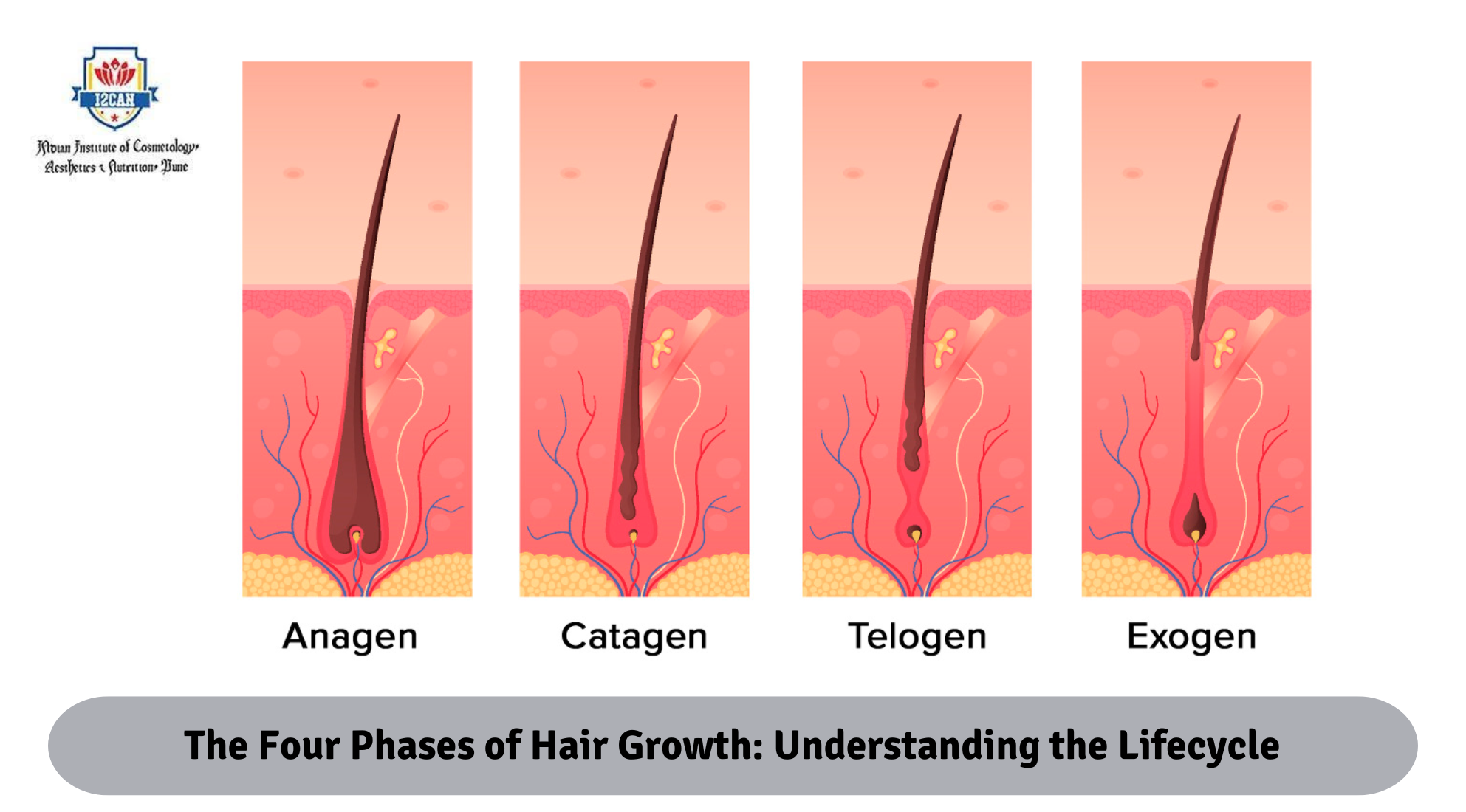Hair growth is a fascinating process that involves multiple phases, each playing a crucial role in determining the length, thickness, and health of our hair. Understanding the lifecycle of hair can help us better appreciate the complexities of our follicles and how to care for them effectively. In this blog post, we will explore the four phases of hair growth in detail, shedding light on the intricacies of this natural process.
Phase 1: Anagen Phase (The Growth Phase) The anagen phase is the active growth phase of hair follicles. During this stage, cells in the hair bulb divide rapidly, leading to the formation of new hair. The duration of the anagen phase varies depending on factors such as genetics, age, and overall health, but it typically lasts between two to seven years.
Key characteristics of the anagen phase include:
- Rapid cell division: Hair follicles undergo continuous cell division at the root, pushing the hair shaft upward and outward.
- Lengthening of hair: As new cells are added to the base of the hair follicle, the hair shaft lengthens, resulting in visible growth.
- Scalp health: A healthy scalp environment is essential for promoting optimal hair growth during the anagen phase. Adequate blood circulation, nutrient supply, and proper hygiene contribute to healthy follicles.
Tips for promoting anagen phase:
- Maintain a balanced diet rich in essential nutrients such as vitamins A, C, D, and E, as well as proteins and minerals like iron and zinc.
- Practice regular scalp massages to improve blood circulation and stimulate hair follicles.
- Use hair care products formulated with ingredients known to support healthy hair growth, such as biotin, keratin, and panthenol.
Phase 2: Catagen Phase (The Transitional Phase) Following the anagen phase, hair follicles enter the catagen phase, also known as the transitional phase. This stage marks the end of active growth and the beginning of a transitional period where the hair prepares to shed and enter a resting phase. The catagen phase typically lasts for two to three weeks.
Key characteristics of the catagen phase include:
- Degeneration of hair follicles: During this phase, the lower part of the hair follicle begins to shrink and detach from the dermal papilla, the structure responsible for nourishing the hair.
- Reduced blood supply: As the hair follicle detaches, its blood supply diminishes, leading to a decrease in nutrient delivery to the hair shaft.
- Formation of club hair: The hair shaft undergoes structural changes, forming what is known as a “club hair” with a hardened, keratinized structure.
Tips for managing the catagen phase:
- Minimize stressors on the hair and scalp, such as excessive heat styling, chemical treatments, and tight hairstyles, which can accelerate the transition to the catagen phase.
- Incorporate nourishing hair masks and treatments into your routine to support the health of transitioning hair and prevent excessive breakage.
- Be gentle when detangling and styling hair during this phase to avoid causing damage to fragile hair strands.
Phase 3: Telogen Phase (The Resting Phase) The telogen phase is a resting period for hair follicles, during which no active growth occurs. Instead, the hair remains in a dormant state as it prepares for shedding and eventual replacement. The telogen phase typically lasts for around three months.
Key characteristics of the telogen phase include:
- Resting follicles: Hair follicles enter a state of dormancy, with no active cell division or growth taking place.
- Shedding of club hair: As new hair begins to grow underneath the club hair formed during the catagen phase, the old hair eventually sheds, making way for the new growth.
- Natural shedding process: It is normal to lose a certain amount of hair during the telogen phase, with an average daily shedding rate of 50-100 hairs.
Tips for managing the telogen phase:
- Maintain a healthy lifestyle, including a balanced diet, regular exercise, and adequate sleep, to support overall hair health and reduce stress-induced hair shedding.
- Avoid excessive manipulation of the hair and scalp, as well as harsh chemical treatments, to minimize damage and breakage during this delicate phase.
- Consider incorporating scalp treatments or supplements containing ingredients like minoxidil or saw palmetto to promote healthy hair growth and reduce shedding.
Phase 4: Exogen Phase (The Shedding Phase) The exogen phase, also known as the shedding phase, marks the final stage of the hair growth cycle. During this phase, the old hair that has completed its lifecycle is shed from the scalp, making room for new hair to emerge. The duration of the exogen phase can vary, but it typically coincides with the onset of new hair growth in the anagen phase.
Key characteristics of the exogen phase include:
- Shedding of old hair: The club hair formed during the telogen phase is gradually released from the follicle, allowing it to fall out naturally.
- Replacement by new hair: As the old hair sheds, new hair begins to emerge from the follicle, initiating a new cycle of growth.
- Continuation of the cycle: The shedding of old hair and the growth of new hair mark the completion of one cycle of the hair growth process, setting the stage for the beginning of another.
Tips for managing the exogen phase:
- Practice gentle hair care techniques, including regular shampooing and conditioning, to support the natural shedding process and prevent the accumulation of dead hair follicles on the scalp.
- Use a wide-tooth comb or a soft-bristled brush to detangle hair and minimize breakage during shedding.
- Be patient and allow the shedding process to occur naturally, avoiding the temptation to pull or force out loose hairs, which can damage the hair follicles.
Conclusion: Understanding the four phases of hair growth provides valuable insights into the natural lifecycle of our hair and how best to care for it at each stage. By adopting a holistic approach to hair care that includes nourishing the scalp, minimizing damage, and supporting healthy growth, we can promote strong, vibrant hair that reflects our overall health and well-being. So, embrace the beauty of your hair’s lifecycle and treat it with the care and attention it deserves.


